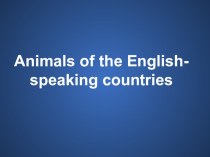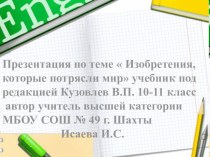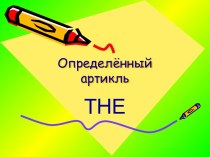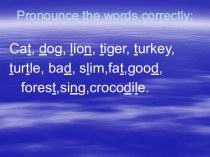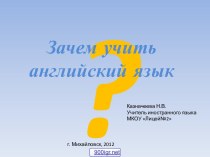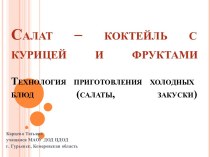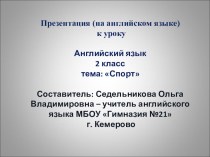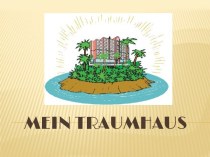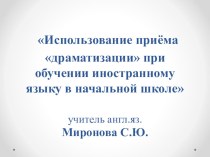Слайд 2
SEMANTIC СLASSIFICATION OF WORDS
BASIC PRINCIPLES OF GROUPING
WORDS.
SYNONYMY
SYNONYMS
CLASSIFICATION OF SYNONYMS
EUPHEMISMS
ANTONYMY
ANTONYMS
CLASSIFICATION OF ANTONYMS
TERMINOLOGICAL AND LEXICO-SEMANTIC GROUPS
OF WORDS
1. LEXICAL AND TERMINOLOGICAL SETS
2. LEXICO-SEMANTIC GROUPS
3. SEMANTIC FIELDS
Слайд 3
I. BASIC PRINCIPLES OF GROUPING WORDS
Two basic principles
of grouping words:
to classify words proceeding from the basic
types of semantic relations;
to group words together starting off with associations connecting the given words with other vocabulary units.
Слайд 4
SEMANTIC CLASSES (CATEGORIES):
Synonyms;
Antonyms;
Lexical & terminological sets;
Lexico-semantic groups;
Semantic fields;
Слайд 5
II. SYNONYMY
Synonymy - the kind of semantic relations
that implies the coincidence in the essential meanings of
linguistic elements, which usually preserve their differences in connotations and stylistic characteristics.
Synonymy does not present a perfect type of a linguistic category.
Слайд 6
2.1. SYNONYMS
Synonyms - words belonging to one
part of speech, close in meaning and interchangeable at
least in some contexts.
Characteristics: the semantic relations of equivalence or by semantic relations of proximity.
Types of synonyms:
Full (total) synonyms characterized by semantic equivalence, are extremely rare.
Слайд 7
Examples:
“I have always liked you very much, I
admire your talent, but, forgive me, - I could
never love you as a wife should love her husband.”
- Was she a pretty girl?
- I would certainly have called her attractive.
‘…his glare suddenly softened into a gaze as he turned his eyes on the little girl.
Слайд 8
“Neibours were apt to smile at the long-legged
bare-headed young man leisurely strolling along the street and
his small companion demurely trotting by his side”.
“Think you can play Romeo? Romeo should smile, not grin, walk, not swagger, speak his lines, not mumble them”.
Слайд 9
The degree of semantic proximity
is estimated in terms
of aspect of meaning:
the denotational;
the connotational;
the pragmatic.
Слайд 10
The difference in connotation: famous - ‘known widely,
having fame’ and notorious ‘widely known because of smth
bad, e.g. for being criminal, violent, immoral’. Thus, famous has a positive emotive evaluation, and the word notorious – negative.
The difference in the pragmatic value: cf.: brotherly – fraternal (братский), bodily – corporal (телесный). In a few cases these synonymic values are reversed, e.g. deed – action (подвиг - поступок), foe – enemy (противник – враг).
Слайд 11
2.2.CLASSIFICATION OF SYNONYMS
Stylistic synonymy implies no interchangeability in
context because the underlying situations are different, e.g. children
– infants, dad – father.
Слайд 12
Ideographic synonymy presents a still lower degree of
semantic proximity and is observed when the connotational and
pragmatic aspects are similar, but there are certain differences in the denotational aspect of meaning of two words, e.g. forest – wood, apartment – flat, shape – form.
Слайд 13
Ideographic-stylistic synonymy is characterized by the lowest degree
of semantic proximity. e.g. ask – inquire, expect –
anticipate.
Слайд 14
SYNONYMIC DOMINANT -
a dominant element, which is the
most general term potentially containing the specific features rendered
by all the other members of the synonymic group.
In the series leave – depart – quit – retire – clear out the verb leave is a synonymic dominant.
Слайд 15
Examples:
To surprise — to astonish — to amaze
— to astound.
To shout — to yell — to
bellow — to roar.
To shine — to flash — to blaze — to gleam — to glisten — to sparkle — to glitter — to shimmer — to glimmer.
To tremble — to shiver — to shudder — to shake.
To make — to produce — to create — to fabricate — to manufacture.
Слайд 16
Characteristic features of the dominant synonym
High frequency of
usage.
Broad combinability, i. e. ability to be used in
combinations with various classes of words.
Broad general meaning.
Lack of connotations. (This goes for stylistic connotations as well, so that neutrality as to style is also a typical feature of the dominant synonym.)
Слайд 17
2.3. EUPHEMISM -
is substitution of words of mild
or vague connotations for expressions rough, unpleasant.
The word
to die has the following euphemisms: to expire, to pass away, to depart, to join the majority, to kick the bucket, etc; pregnant – in the family way.
Слайд 18
The word lavatory
powder room,
washroom,
restroom,
retiring
room,
(public) comfort station,
ladies' (room),
gentlemen's (room),
water-closet,
w.c.
public conveniences,
Windsor castle
Слайд 19
pregnant:
in an interesting condition,
in a delicate condition,
in the family way,
with a baby coming,
(big)
with child,
expecting.
Слайд 20
A landlady who refers to her lodgers as
paying guests is also using a euphemism
"... Mrs. Sunbury
never went to bed, she retired, but Mr. Sunbury who was not quite so refined as his wife always said: "Me for Bedford" ..."
legs to be "indelicate" and substitutes for it its formal synonym lower extremities
Eating - to partake of food (of refreshment), to refresh oneself, to break bread.
Слайд 21
The adjective drunk
intoxicated (form.), under the influence (form.),
tipsy, mellow, fresh, high, merry, flustered, overcome, full (coll.),
drunk as a lord (coll.), drunk as an owl (coll.), boiled (sl.), fried (sl.), tanked (sl.), tight (sl.), stiff (sl.), pickled (sl.), soaked (sl.), three sheets to the wind (sl.), high as a kite (sl.), half-seas-over (sl.), etc.
"Motty was under the surface. Completely sozzled."
Слайд 22
Euphemisms
are words or expressions that speakers substitute for
taboo words in order to avoid a direct confrontation
with topics that are embarrassing, frightening, or uncomfortable: God, the devil, sex, death,, money, war, crime, or religion. These topics seem to be cross-cultural. A linguistic consequence of cultural taboos is the creation of euphemisms. The euphemism as a linguistic phenomenon shows no signs of disappearing.
Слайд 23
III. ANTONYMY
3.1. ANTONYMS
Antonyms – a class of words
grouped together on the basis of the semantic relations
of opposition.
Antonyms are words belonging to one part of speech sharing certain common semantic characteristics and in this respect they are similar to such semantic classes as synonyms, lexical sets, lexico-semantic groups
Слайд 24
We use the term antonyms to indicate words
of the same category of parts of speech which
have contrasting meanings, such as
hot — cold,
light — dark,
happiness — sorrow,
to accept — to reject,
up — down
cold – warm,
sorrow - gaiety
Слайд 25
A polysemantic word may have an antonym (or
several antonyms) for each of its mean meanings
Dull –
interesting,
amusing, entertaining for its meaning of "deficient in interest",
clever, bright, capable for its meaning of "deficient in intellect", and active for the meaning of "deficient in activity“
active for the meaning of ‘deficient in activity’
Слайд 26
Most antonyms are adjectives: high — low, wide
— narrow, strong — weak, old — young, friendly
— hostile.
Verbs take second place: to lose — to find, to live — to die, to open — to close, to weep — to laugh.
Nouns are not rich in antonyms: friend — enemy, joy — grief, good — evil, heaven — earth, love — hatred.
A)adverbs derived from adjectives: warmly — coldly, merrily — sadly, loudly — softly;
b) adverbs proper: now — then, here — there, ever — never, up — down, in — out.
Слайд 27
3.2. CLASSIFICATION OF ANTONYMS
Structurally, antonyms can be divided
into antonyms of the same root, e.g. to do
– to undo; cheerful – cheerless; and antonyms of different roots, e.g. day – night, rich – poor.
Слайд 28
SEMANTICALLY
ANTONYMS ARE CLASSIFIED INTO
Contradictories represent the
type of semantic relations that exist between pairs like,
e.g. dead – alive, single – married.
Contraries (gradable antonyms) are antonyms that can be arranged into a series according to the increasing difference in one of their qualities: in cold – hot , cool – warm are intermediate members.
Incompatibles - antonyms which are characterized by the relations of exclusion: morning - afternoon, evening - night.
Слайд 29
INTERCHANGEABILITY OF ANTOMYMS
Polysemy may be analysed through synonymy:
handsome can be singled out by means of synonymic
substitution a handsome man—a beautiful man; but a handsome reward—a generous reward.
Polysemy may be also analysed through antonymy:
a handsome man—an ugly man, a handsome reward—an insufficient etc.).
Слайд 30
4.1. LEXICAL AND TERMINOLOGICAL SETS
Lexical sets are
words denoting things correlated on extralinguistic groups form: lion,
tiger, leopard, puma, cat refer to the lexical set of ‘the animal of the cat family’.
Terminological sets are lexical sets, which acquire a more specialized character:
e.g. names of ‘musical instruments’: piano, organ, violin, drum;
names of ‘parts of the car mechanism’: radiator, motor, handbrake, wheels.
Слайд 31
Lexico-semantic group
unites words describing sides of one
and the same general notion if:
the underlying notion is
not too generalized and all-embracing, like notions of ‘time’, ‘space’, ‘life’, ‘process’, etc.
the reference to the underlying notion is not just an implication in the meaning of the lexical unit but forms an essential part in its semantics.
Verbs of ‘destruction’: to ruin, to destroy, to explore, to kill, etc.
Слайд 32
Lexico-semantic groups of words
The word saleswoman may be
analysed into the semantic components: ‘human’, ‘female’, ‘professional’. Consequently
the word saleswoman may be included into a lexico-semantic group under the heading of human together with the words man, woman, boy, girl, etc. and under the heading female with the words girl, wife, woman and also together with the words teacher, pilot, butcher, etc., as professionals.
Слайд 33
Different meanings of polysemantic words make it possible
to refer the same word to different lexico-semantic groups:
Make
in the meaning of ‘construct’ is naturally a member of the same lexico-semantic group as the verbs produce, manufacture, etc , whereas in the meaning of ‘compel’ it is regarded as a member of a different lexico-semantic group made up by the verbs force, induce, etc.
Слайд 34
The verb ‘take’
in combination with any member of
the lexical group denoting means of transportation is synonymous
with the verb go (take the tram, the bus, etc.).
When combined with members of another lexical group the same verb is synonymous with to drink (to take tea, coffee, etc.).
Слайд 35
4.3. SEMANTIC FIELDS
A semantic field - is a
large group of words of different parts of speech
in which the underlying notion is broad enough to include almost all-embracing sections of vocabulary. The main feature of a semantic field is its national specifics.
E.g., cosmonaut (n), spacious (adj.), to orbit (v) belong to the semantic field of ‘space’.
Слайд 36
Semantic Fields:
of colours: blue, red, yellow, black, etc.
of
kinship terms: mother, father, brother, cousin, etc.
of pleasurable
emotions: joy, happiness, gaiety, enjoyment, etc.
Слайд 37
The word ‘captain’
cannot be properly understood until we
know the semantic field in which this term operates
— the army, the navy, or the merchant service. Thus, captain is determined by the place it occupies among the terms of the relevant rank system. What captain means we know whether his subordinate is called mate or first officer (merchant service), commander (‘navy’) or lieutenant (‘army’).
Слайд 38
Kinship terms in Russian and in English
the
meaning of the English term mother-in-law is different from
either the Russian тёща or свекровь as the English term covers the whole area which in Russian is divided between the two words. The same is true of the members of the semantic field of colours (cf. blue — синий, голубой), of human body (cf. hand, arm — рука) and others.
Слайд 39
Semantic field of ‘space’:
nouns: expanse, extent, surface,
etc.;
verbs: extend, spread, span, etc.;
adjectives: spacious, roomy, vast,
broad, etc.
Слайд 40
The correlation between the semantic classes may be
graphically presented by means of concentric circles (diagram).
a semantic field
a lexico-semantic group
a lexical / terminological set
Слайд 41
SUMMARY AND CONCLUSIONS
Classification of vocabulary into thematic groups
is based on common contextual associations. Contextual associations are
formed as a result of regular co-occurrence of words in similar, repeatedly used contexts within the framework of sentences.
Слайд 42
The main criterion underlying semantic classification of vocabulary
items on the paradigmatic axis is the type of
meaning relationship between words.
Слайд 43
The criterion of common concept serves to classify
words into semantic fields and lexico-semantic groups.
Semantic relationship of
inclusion is the main feature of hyponymic hierarchical structure. Semantic similarity and semantic contrast is the type of relationship which underlies the classification of lexical items into synonymic and antonymic series.
Слайд 44
Synonymy and antonymy are correlative and sometimes overlapping
notions. Synonymous relationship of the denotational meaning is in
many cases combined with the difference in the connotational (mainly stylistic) component.
Слайд 45
It is suggested that the term synonyms should
be used to describe words different in sound-form but
similar in their denotational meaning (or meanings) and interchangeable at least in some contexts.
Слайд 46
The term antоnуms is to be applied to
words different in sound-form characterised by different types of
semantic contrast of the denotational meaning and interchangeable at least in some contexts.















































